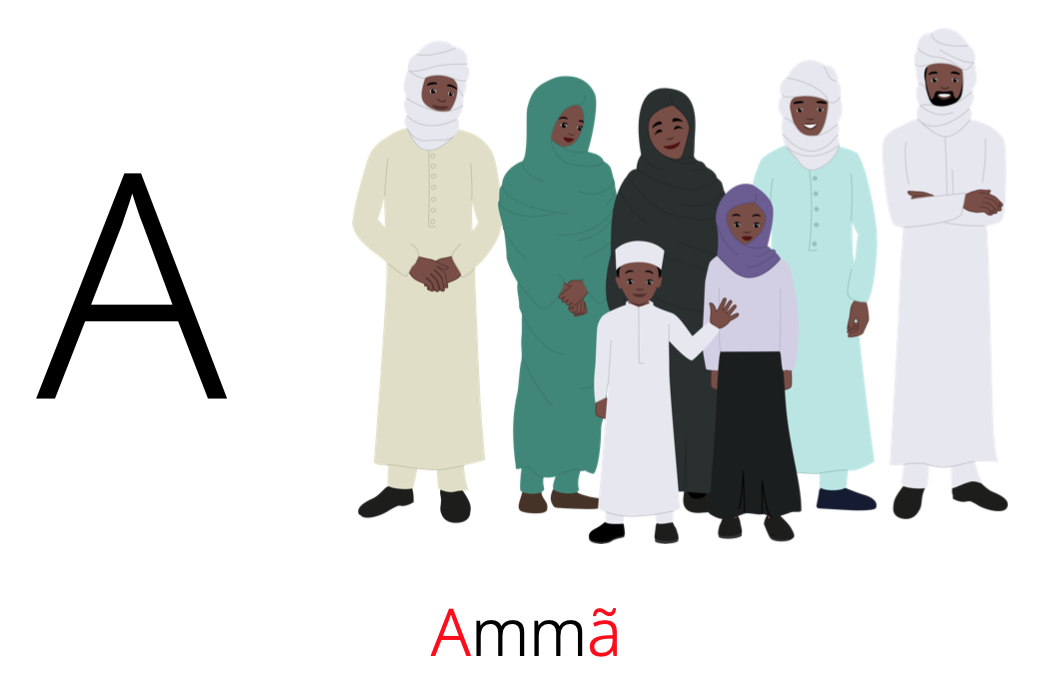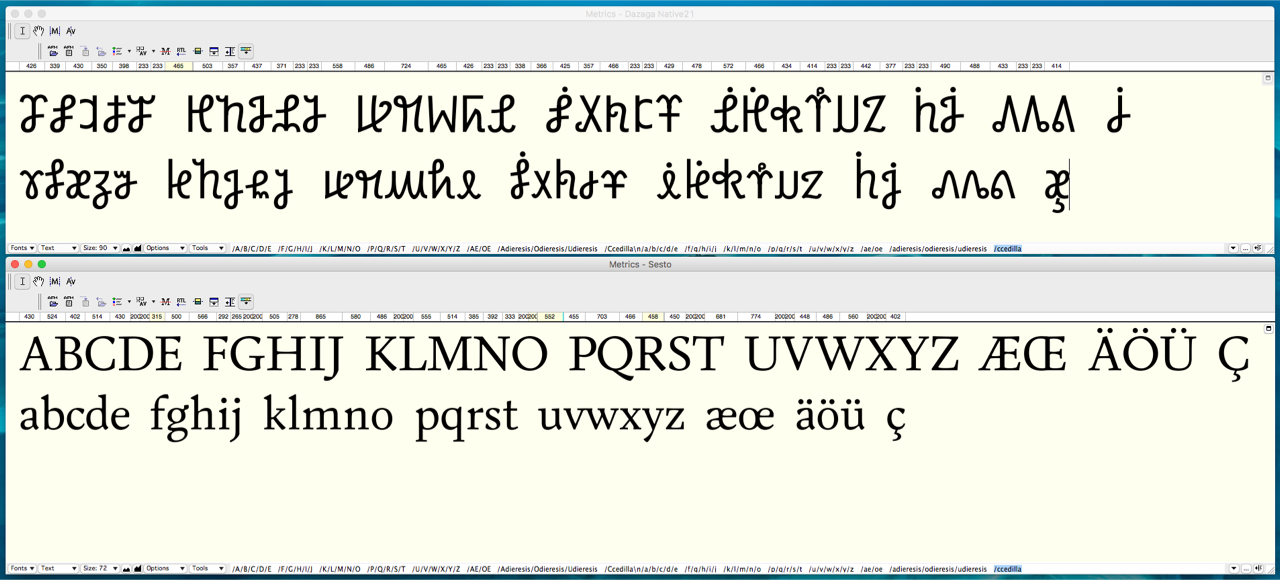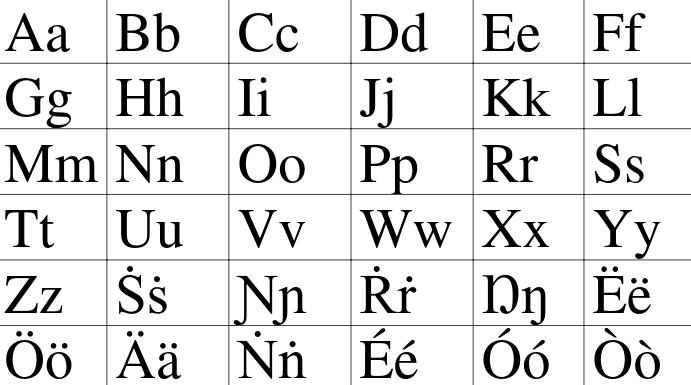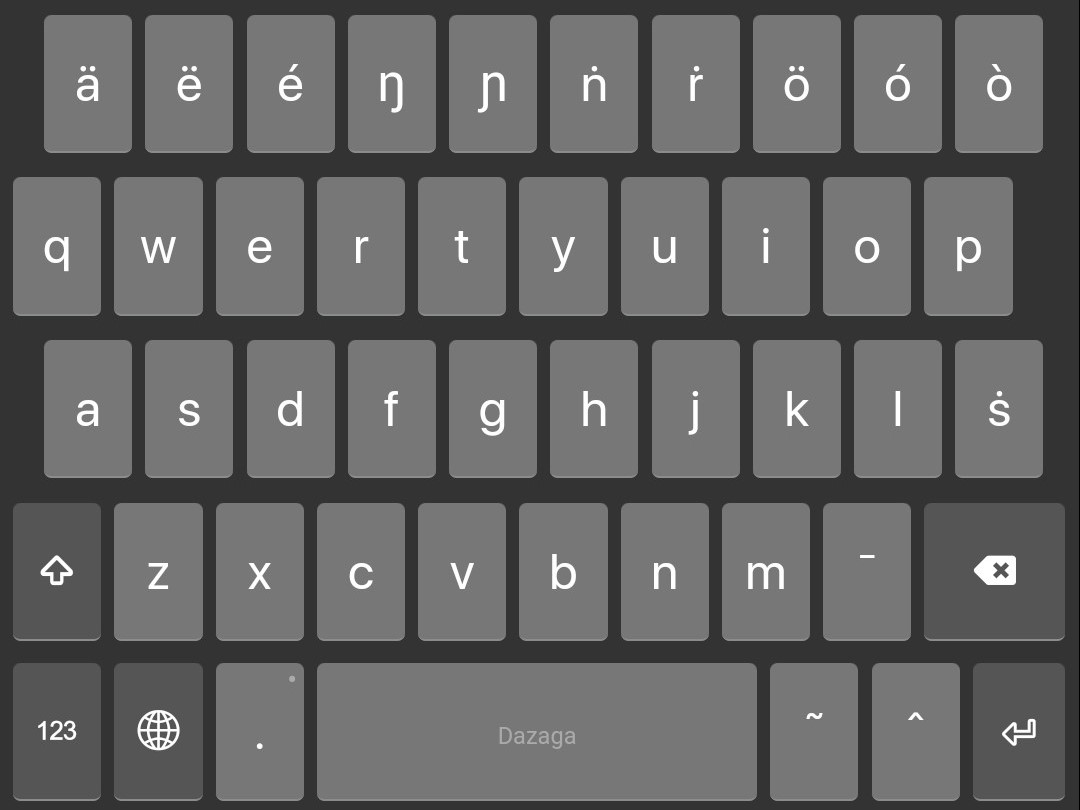
Together with members of the Karra-Gourane language community from Berlin-Brandenburg, we have developed an alphabet for the Dazaga-Gourane-Karra language, which speakers can use to bring their own language to life in writing and to record and preserve the rich history and cultural identity of the Karra-Gourane for future generations.
A milestone that brings the voices of the Karra-Gourane into the digital world.
Traditional script, difficult implementation

At first, members of the Berlin-Brandenburg Karra-Gourane community revised an alphabet designed in the Republic of Chad, which uses traditional camel symbols as a model, with the support of communication designer Susanne Zippel (CEO Mittelpunkt•Zhongdian). The aim was to make the script usable for both digital communication and handwritten use.
That version has not yet caught on in the language community. One of the reasons for this was that learning a new alphabet was too great a challenge for many adult learners without educational support.
A new design

A new version of the alphabet based on the Latin script was developed by members of the Berlin-Brandenburg community in collaboration with people in Chad. Advantages of the Latin script are:
- easy digital implementation
- keyboards already exist for the Latin alphabet
- speakers are familiar with the characters from French or English
However, it is not so simple to apply the Latin alphabet. The language community wanted a so-called phonographic alphabet – that is, one letter is assigned to exactly one sound. However, the variety of sounds in the language is greater than in Latin, so additional characters are needed to represent all sounds.
For this reason, Latin letters were combined with diacritical marks and special characters from the International Phonetic Alphabet (IPA) were added. However, such special characters are more difficult to learn and have disadvantages when it comes to digital implementation.
Community and scientists work together
Youssouf Mahamat Kerim from the Berlin-Brandenburg Karra-Gourane community jointly developed a draft alphabet for Dazaga-Gourane-Karra with Julian A. Rott and Zacharias van Stek from our General Linguistics working group at Humboldt University. The resulting alphabet has 36 letters. Zacharias van Stek and Henri Schellberg created digital keyboards for computers and smartphones for this alphabet, making it easier for speakers to write and send text messages.

Matching sounds and letters
First, we conducted a phonetic analysis and checked the completeness of the writing system. In collaboration with Youssouf Mahamat Kerim, the individual sounds of the language were identified and assigned to letters. The advantages and disadvantages of different assignments of sounds and characters were discussed and evaluated in terms of digitisation, learnability and cultural aspects. The alphabet now available is the result of a negotiation process in which the language community made the final decision.
The Dazaga-Gourane-Karra alphabet in practice
The Republic of Chad officially recognised the script on 18 March 2025. Members of the language community are now working to learn, teach and disseminate the alphabet within the language community. To this end, the active community is currently producing numerous learning materials, including a learning video and a dictionary in collaboration with a graphic designer. The alphabet is only the first step towards a standardised spelling system.
At the same time, we have not given up hope of also developing a traditional script based on camel signs. Together with Susanne Zippel and Youssouf Mahamat Kerim, we are working on a simplified form of the camel sign script.